The Golden Age: Post-War Innovation and Cultural Icons (1945-1990s)
automotive golden age, post-war cars, muscle cars, sports cars, automotive culture, car design history, Porsche 911, VW Beetle, Japanese cars
The Evolution of the Automobile - Part 2 of 3
Experience the golden age of automobiles—from post-war utility to high-performance sports cars
Series Posts:
- Part 1: Birth of Motion (1832-1945) - Early innovations & pre-WWII era
- Part 2: The Golden Age (1945-1990s) - Post-war boom & cultural icons
- Part 3: Electric Dreams (1996-Present) - The green revolution
When World War II ended in 1945, the automotive world stood at a crossroads. Europe lay in ruins, America’s factories hummed with capacity, and Japan prepared to rebuild. Over the next five decades, these different circumstances would create distinct automotive philosophies—and some of history’s most iconic vehicles.
This was the golden age of automobiles, when cars became cultural symbols, not just transportation. Let’s explore the innovations and icons that defined this transformative era.
European Ingenuity: The People’s Cars
Post-war Europe faced a transportation crisis. Cities lay in ruins, fuel was scarce, and consumers had little money. European automakers responded with brilliant simplicity—cheap, efficient vehicles that prioritized practicality over performance.
Citroën 2CV: The Peasant’s Chariot (1948-1990)
The Citroën 2CV (“two horsepower”) was France’s answer to motorizing rural areas still dependent on horses and carts. Designer Pierre Boulanger received a legendary brief: create a car that could carry a farmer, his goods, and a basket of eggs across a plowed field without breaking a single egg.
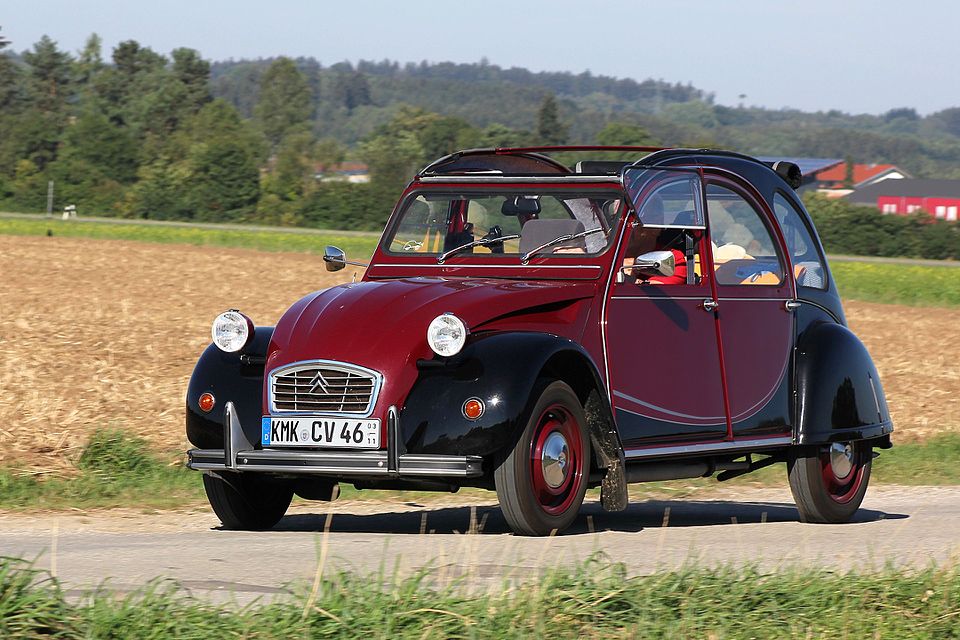
First shown at the 1948 Paris Motor Show, the 2CV delivered on this impossible promise. Its ingenious suspension system soaked up bumps with remarkable effectiveness. The air-cooled front engine drove the front wheels, while the lightweight body featured a fold-back canvas roof.
The 2CV was also the first production car to use Michelin’s revolutionary radial tires, which offered better grip and longer life than conventional designs. Over its 42-year production run, Citroën built 3.8 million 2CVs, plus 1.2 million vans and pickups.
This was minimalist engineering at its finest—proof that brilliant design doesn’t require complexity or expense.
Volkswagen Beetle: The People’s Car (1938-2003)
The Volkswagen Beetle (Type 1) became one of the most successful cars in history, with production spanning an astonishing 65 years. Originally designed by Ferdinand Porsche in Nazi Germany as a literal “people’s car” (Volkswagen), the Beetle truly came into its own after the war.
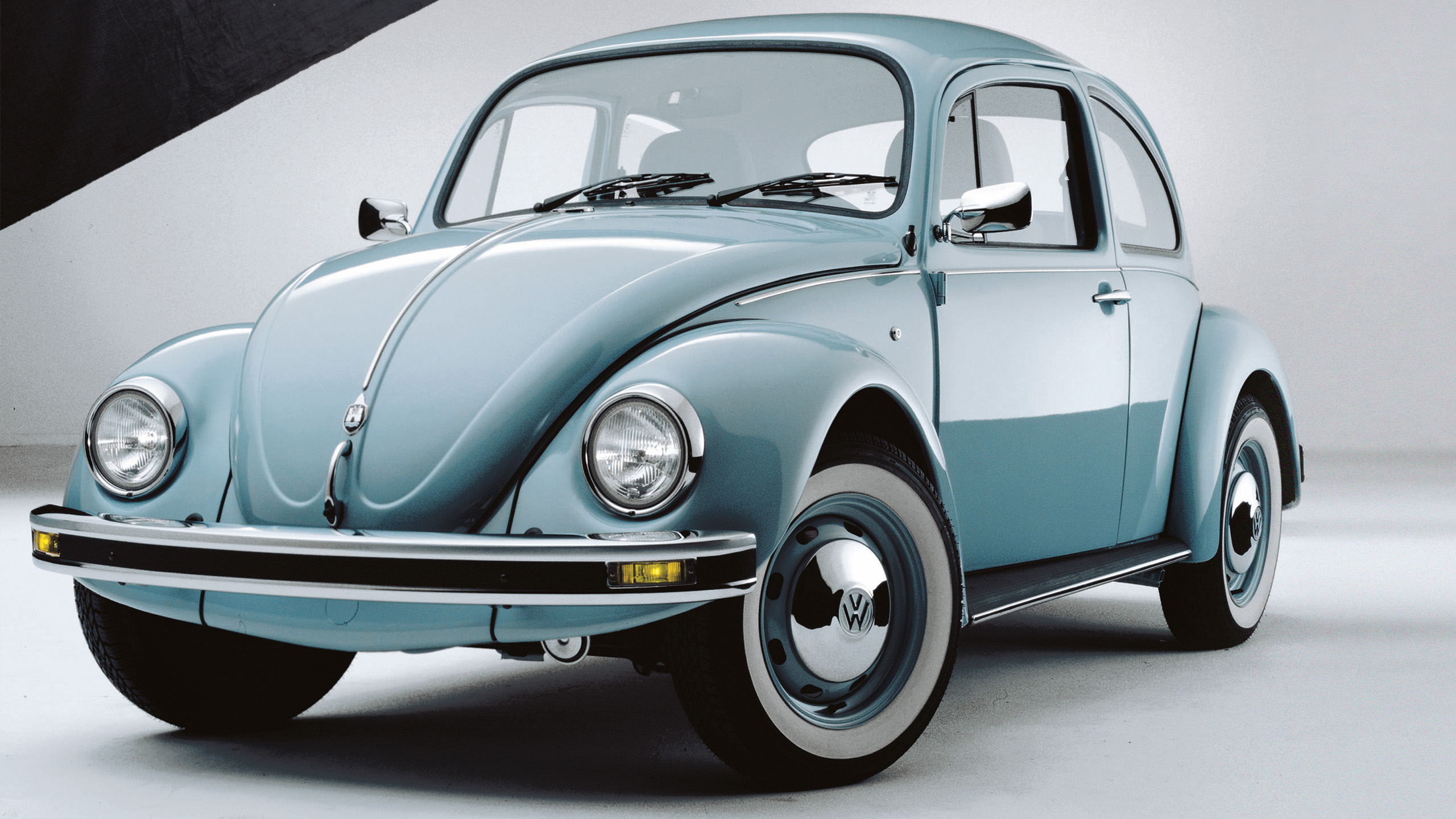
Its distinctive rounded shape remained essentially unchanged throughout its production life, with the rear-mounted air-cooled engine providing simplicity and reliability. By the time production ended in 2003, over 21.5 million Beetles had been built, making it a symbol of affordable, dependable transportation worldwide.
The Beetle proved that good design transcends trends. Its shape became instantly recognizable across cultures and generations.
Fiat 500: Italian Style Meets Efficiency (1957-1975)
Italy’s contribution to the people’s car movement came from engineer Dante Giacosa with the Fiat 500 (Cinquecento). This tiny urban runabout featured a rear-mounted air-cooled engine and ultralight construction, making it perfect for navigating narrow Italian streets and parking in impossibly tight spaces.

Though diminutive, the 500 overflowed with character and charm. It became a cultural icon that represented Italian style, efficiency, and joy. The retro-modern Fiat 500 introduced in 2007 pays homage to this beloved original.
The Mini: Maximum Space, Minimum Size (1959)
Perhaps the most revolutionary small car came from Britain. Designer Alec Issigonis created the Mini with a radical layout: a transverse-mounted engine driving the front wheels. This configuration maximized interior space, with an astounding 80% of the car’s footprint dedicated to passengers and luggage.
.jpg)
First sold as the Austin Seven and Morris Mini-Minor, the car became simply “Mini” in 1969. Over 5.38 million were produced until 2000, making it Britain’s best-selling car. The Mini excelled not just as practical transportation but also as a racing competitor, winning the Monte Carlo Rally multiple times in the 1960s.
The Mini proved that clever engineering could create big space in a small package—a lesson modern city cars still apply today.
American Muscle: Power and Presence
While Europe prioritized efficiency, post-war America celebrated abundance. With cheap gas, wide-open highways, and manufacturing capacity to spare, American automakers created increasingly large, powerful, and flamboyant vehicles.

The period from WWII’s end to the 1973 oil crisis represented American automotive excess at its finest:
- Bold styling: Massive tail fins, gleaming chrome, and dramatic front grilles
- V8 power: High-displacement engines delivering impressive horsepower
- Luxury features: Automatic transmissions, air conditioning, power steering, power windows
- Cultural impact: Cars became symbols of freedom, status, and the American Dream
Models like the Ford Mustang (1964) created entirely new market segments. The “pony car” offered affordable performance with stylish looks, spawning imitators and competitors for decades.
But the 1973 oil crisis abruptly ended this era. Suddenly, fuel efficiency mattered more than horsepower. American automakers struggled to adapt, opening the door for Japanese competitors who had already mastered efficiency.
Sports Car Legends: Engineering Excellence
While practical cars served daily needs, sports cars captured imaginations and pushed technical boundaries. The post-war era produced legendary performance machines that remain automotive icons.
Porsche 911: Timeless Performance (1964-Present)
The Porsche 911 debuted in 1964 with a distinctive shape and rear-mounted engine layout that seemed destined for obsolescence. Instead, it became perhaps the most enduring sports car design in history.
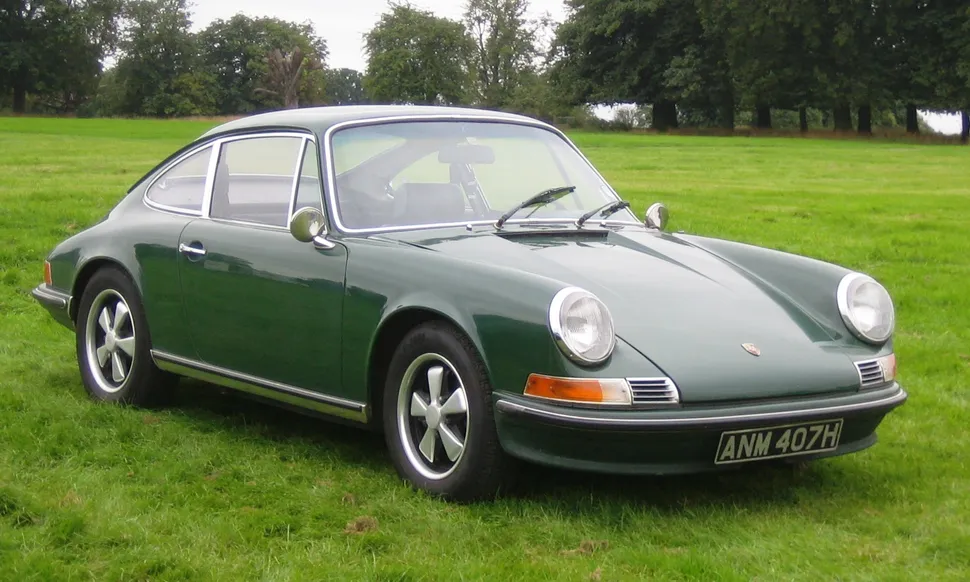
Through decades of development, the 911 has continuously evolved while maintaining its essential character. Each generation brings modern technology while preserving the driving experience that made the original special. The rear-engine layout that critics initially questioned became part of the 911’s unique charm.
Today’s 911s share DNA with that first 1964 model, yet incorporate cutting-edge technology. It’s a masterclass in evolutionary design.
Jaguar XJS: Grand Touring Elegance (1975)
Following the legendary E-Type, Jaguar introduced the XJS with controversial “flying buttress” pillars flanking the rear window. Initial reception was mixed, but the XJS matured into a beloved grand tourer that combined British elegance with long-distance comfort.

The XJS proved that sports cars didn’t need to be harsh or impractical. It offered refined performance for covering continents in style.
McLaren F1: The Ultimate Supercar (1992)
When McLaren designed the F1, engineer Gordon Murray aimed to create the world’s greatest road car without compromise. The result featured a carbon fiber monocoque chassis, a naturally aspirated BMW V12 engine, and a central driving position with two passenger seats flanking it.
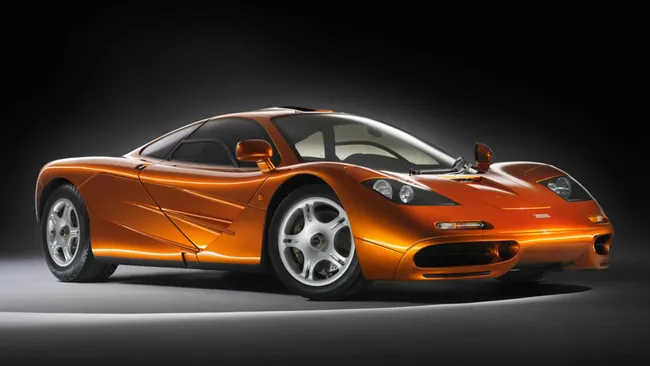
The F1 set speed records and established new benchmarks for supercar performance. Its naturally aspirated V12 delivered thrilling power without turbo lag, while its carbon construction kept weight minimal. Only 106 were built, making each one a coveted collector’s item.
The F1 demonstrated that with sufficient vision and engineering prowess, the impossible becomes achievable.
The Japanese Reliability Revolution
While European and American manufacturers chased performance or style, Japanese automakers focused relentlessly on reliability, efficiency, and value. This strategy would fundamentally reshape the global automotive landscape.
Toyota Corolla: The World’s Best-Seller (1966-Present)
Introduced in 1966, the Toyota Corolla became the world’s best-selling car model by 1974, eventually surpassing the Beetle in 1997. Its success rested on a simple formula: reliable engineering, fuel efficiency, and affordable pricing.
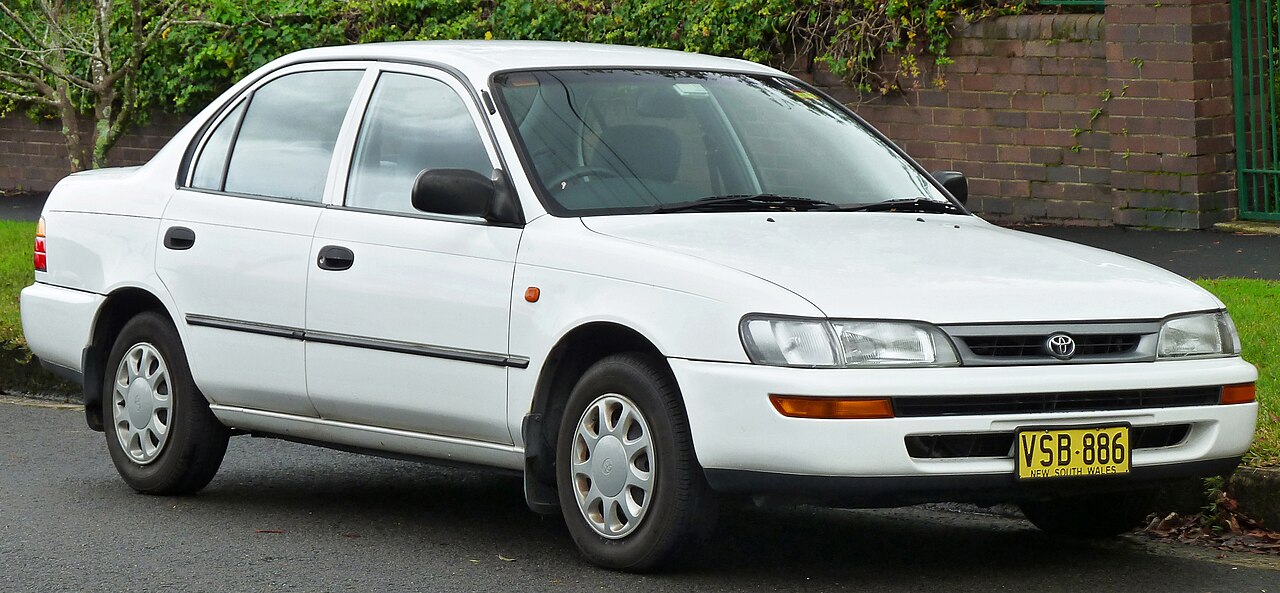
Through multiple redesigns and generations, the Corolla maintained its reputation for dependability. It demonstrated that cars didn’t need to be exciting to succeed—they just needed to work, every time, without drama.
Mercedes-Benz W123: German Durability (1975-1986)
While technically German, the Mercedes-Benz W123 deserves mention for setting benchmark durability standards. Renowned for its robust construction and legendary reliability, the W123 became the taxi of choice worldwide.
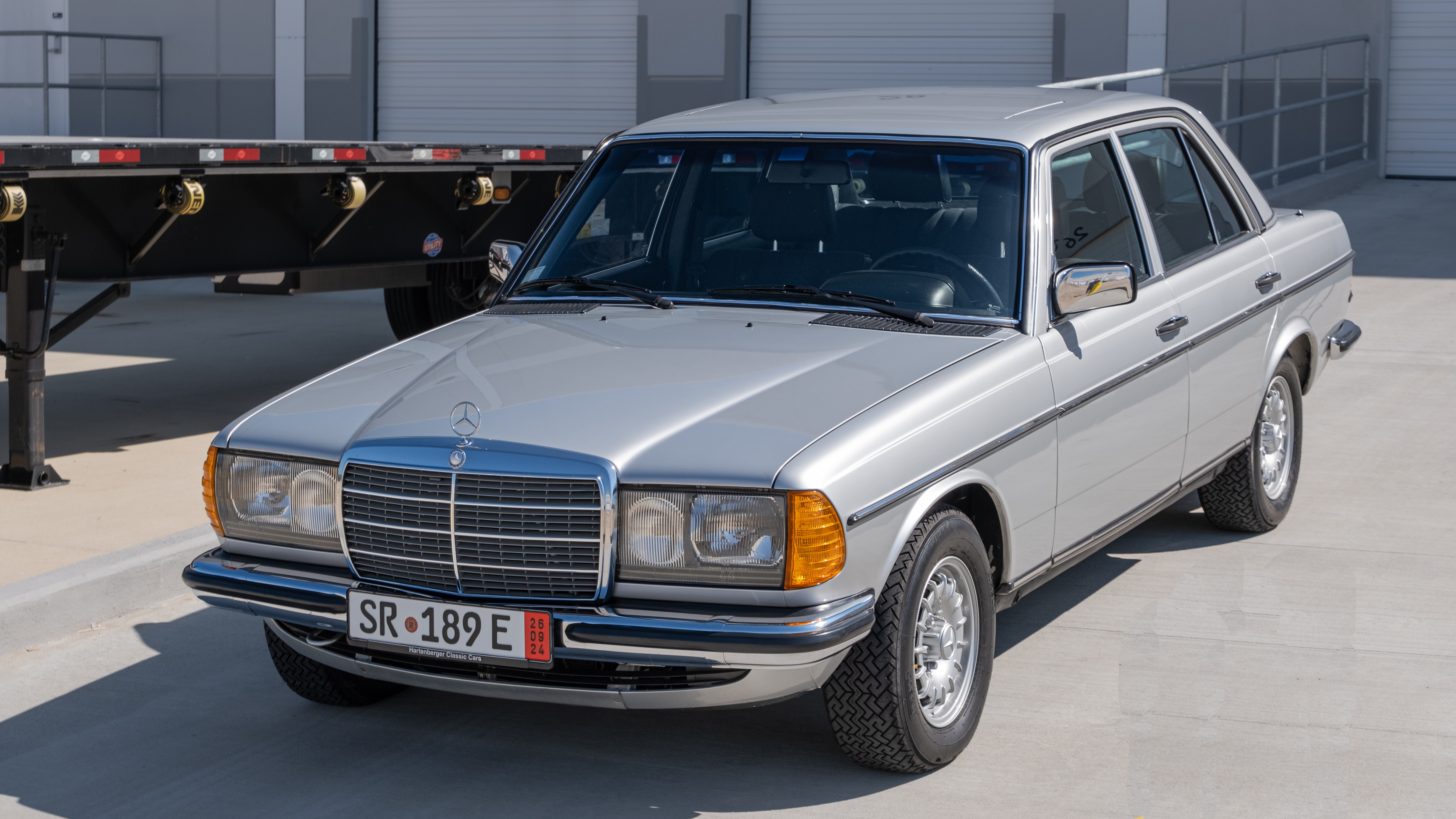
Over 2.7 million were sold, and many remain in daily service decades later. It proved that premium engineering could deliver exceptional longevity—a promise Mercedes built its reputation upon.
Microcars and Kei Cars: Small Wonders
Not all innovation happened at large scales. Microcars and Kei cars represented creative responses to space constraints, tax regulations, and urban congestion.
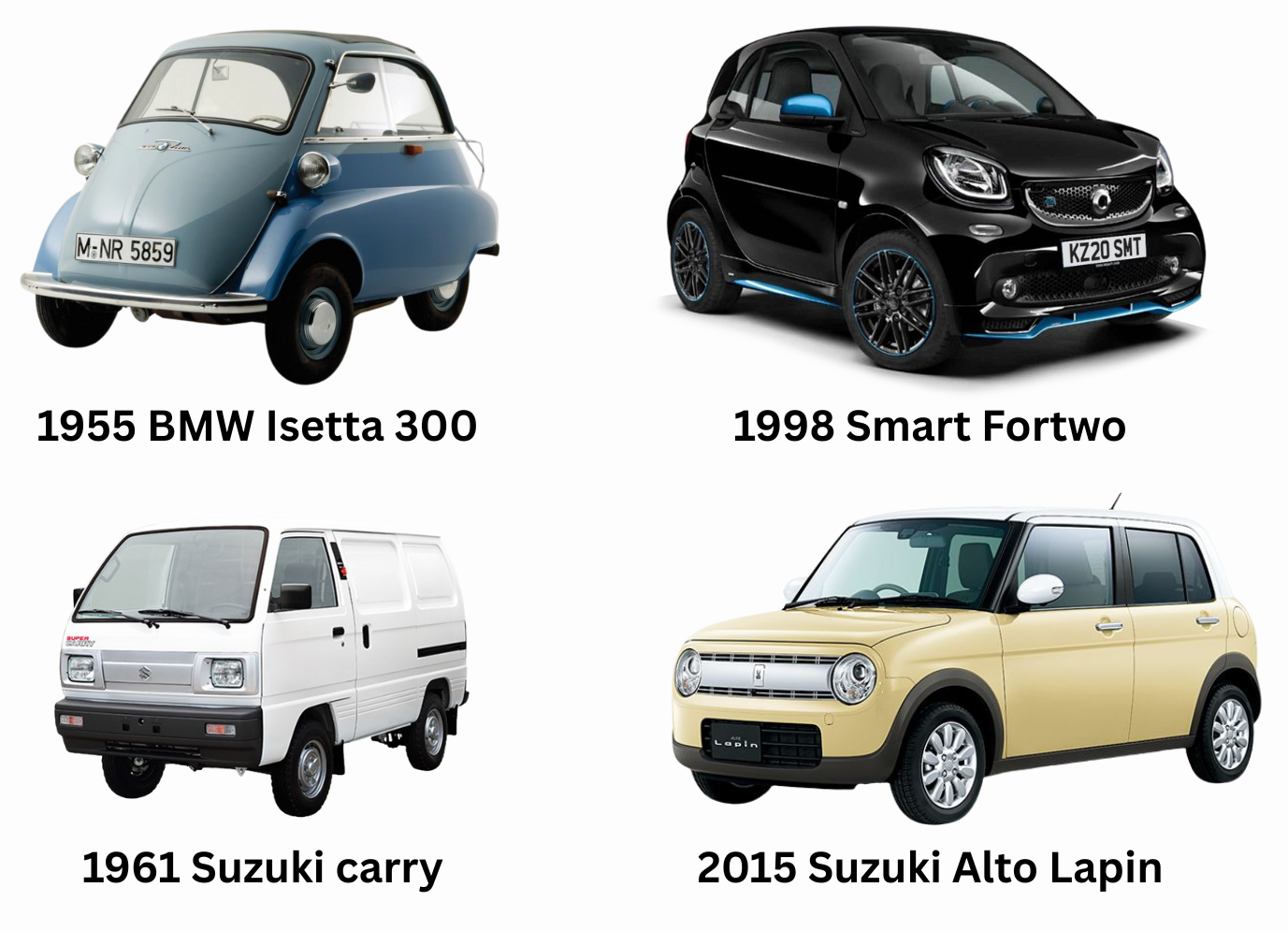
Japan’s Kei car regulations (established 1949) created a unique vehicle category with strict size and engine limits (currently 660cc maximum). These restrictions spurred innovation, producing surprisingly capable vehicles like the Honda N360, Subaru 360, and Suzuki Alto.
Some Kei cars even became sports cars, like the Honda Beat and Daihatsu Copen, proving that performance and fun don’t require large engines or footprints.
| Model | Type | Length (mm) | Engine (cc) |
|---|---|---|---|
| BMW Isetta | Microcar | 2285 | 250-300 |
| Fiat 500 | Microcar | 2970 | 479-594 |
| Peel P50 | Microcar | 1370 | 49 |
| Honda N360 | Kei Car | 2995 | 354 |
| Subaru 360 | Kei Car | 2995 | 356 |
| Suzuki Alto | Kei Car | 3195 | 550-660 |
| Honda Beat | Kei Sports | 3295 | 656 |
| Daihatsu Copen | Kei Sports | 3395 | 658 |
These tiny vehicles made mobility accessible in crowded cities while minimizing environmental impact—lessons that remain relevant today.
The Legacy of an Era
The period from 1945 to the 1990s created automotive diversity unmatched in history. European efficiency, American power, Japanese reliability, and sports car passion each represented different philosophies about what cars should be.
These weren’t just vehicles—they were cultural artifacts that reflected their times. The Beetle symbolized democratic mobility, American muscle cars embodied post-war confidence, and Japanese imports demonstrated that reliability could trump flashiness.
The 1973 oil crisis marked a turning point, permanently elevating fuel efficiency alongside performance. Japanese manufacturers, already focused on economy, gained market share while American makers struggled to adapt. The automotive world would never be the same.
But change was accelerating. By the 1990s, environmental concerns were rising, and a new technology was emerging that would revolutionize transportation once again: electric propulsion.
In Part 3, we’ll explore how environmental pressures and technological breakthroughs launched the electric vehicle revolution.